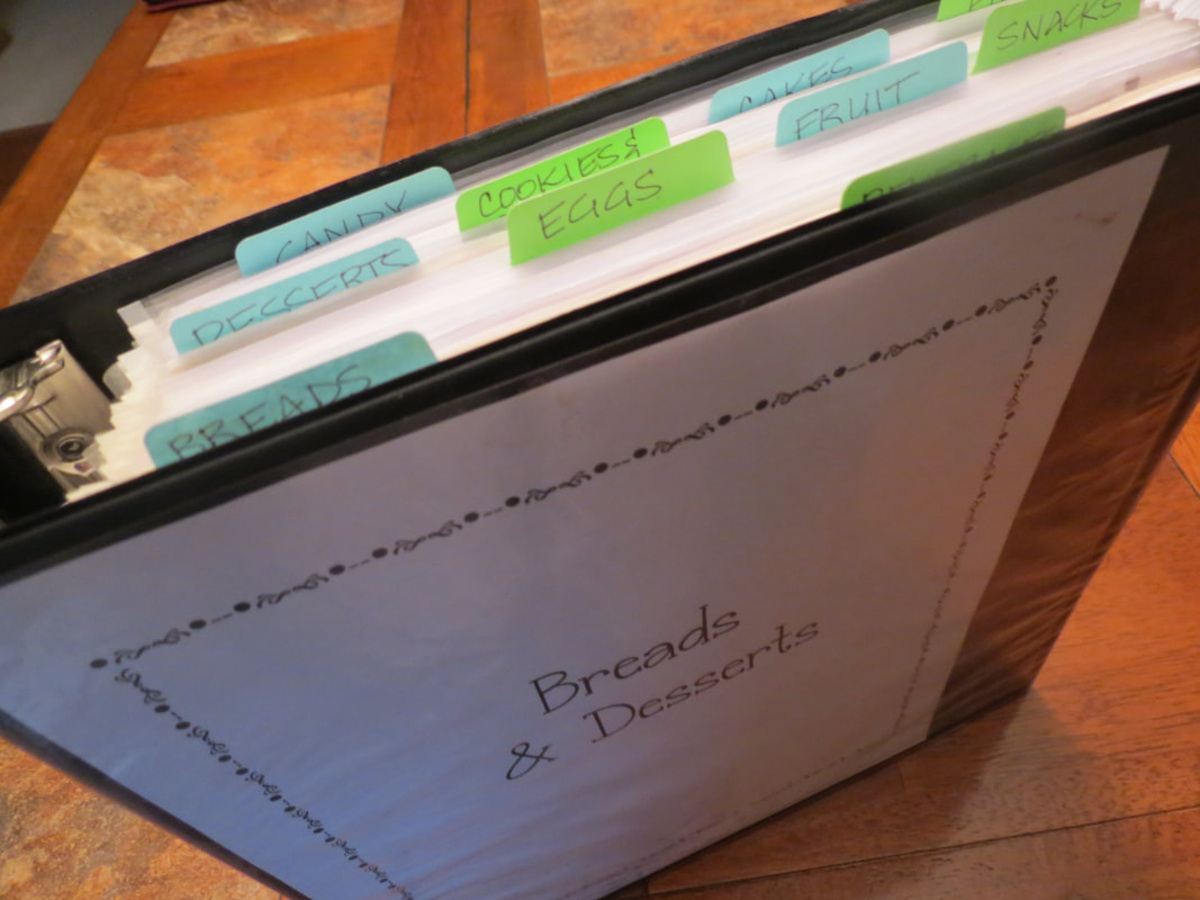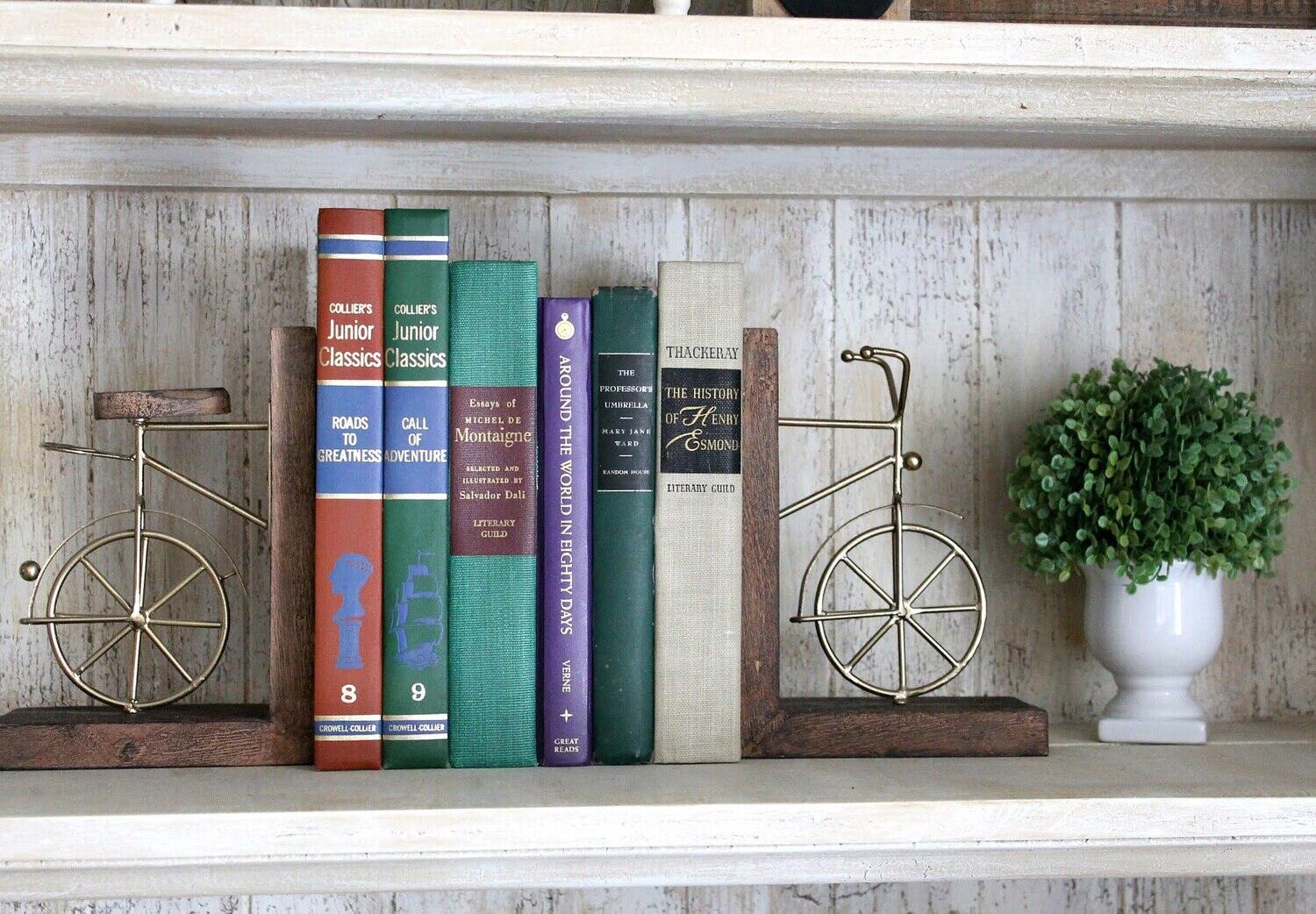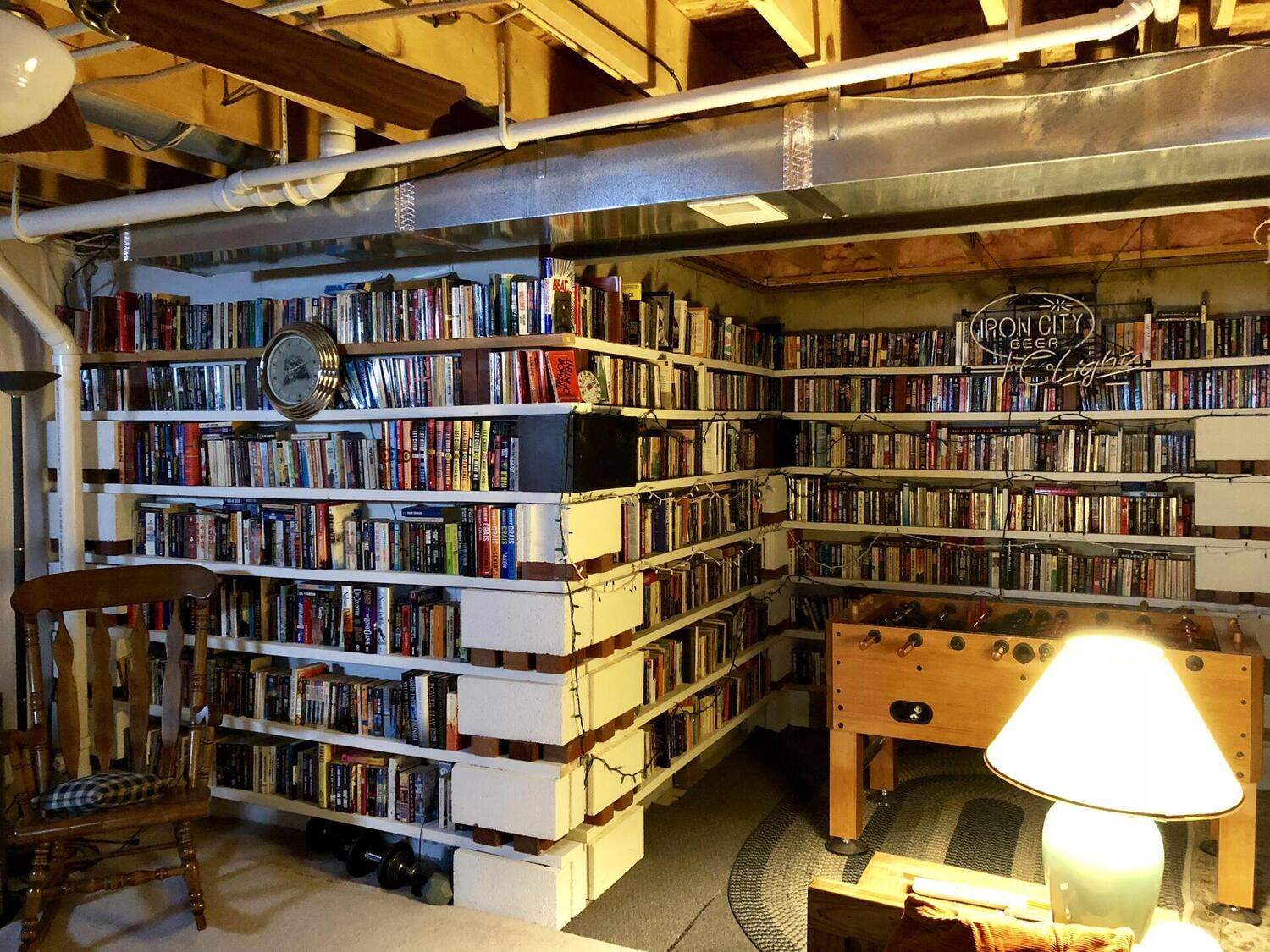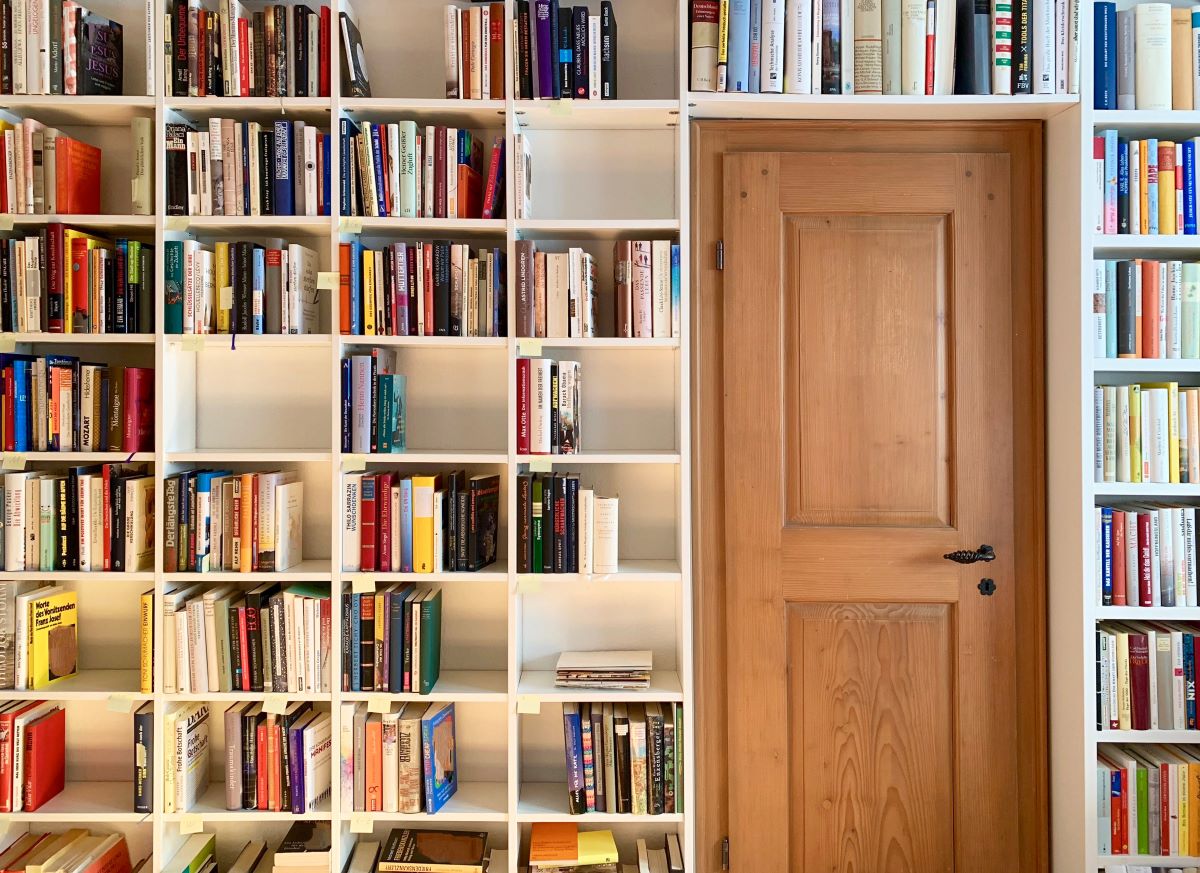Home>Home Maintenance>How To Book For Home Repair


Home Maintenance
How To Book For Home Repair
Modified: March 6, 2024
Learn how to book for home maintenance and repair. Discover expert tips and tricks for tackling common household issues and keeping your home in top shape.
(Many of the links in this article redirect to a specific reviewed product. Your purchase of these products through affiliate links helps to generate commission for Storables.com, at no extra cost. Learn more)
Introduction
Welcome to the ultimate guide on home repair! Whether you’re a seasoned homeowner or a first-time buyer, having a basic understanding of home maintenance is crucial. From leaky faucets and squeaky floors to damaged drywall and faulty electrical systems, there’s always something that needs fixing or improving around the house.
While calling a professional is always an option, being able to tackle common home repairs yourself can save you time and money. That’s why we’ve put together this comprehensive guide to help you become a proficient DIY (Do-It-Yourself) enthusiast in the realm of home maintenance.
In this guide, we’ll cover a wide range of topics related to home repair. We’ll start by familiarizing ourselves with common repairs that homeowners frequently encounter. From there, we’ll dive into the essential tools you’ll need to handle these repairs effectively.
Throughout this guide, we’ll provide step-by-step instructions, tips, and tricks to tackle various repairs around your home. Whether you’re dealing with plumbing issues, electrical problems, or even damaged drywall, you’ll find the guidance you need to successfully complete the repairs yourself.
Understanding how to fix dripping faucets, repair squeaky floors, troubleshoot HVAC systems, and even tackle more advanced tasks such as repairing leaky roofs and broken windows – all of this will be covered in detail.
Remember, home repair can be a challenging task, but with the right knowledge and tools, you can take care of a surprising number of issues on your own. Not only will this save you money, but it will also give you a sense of accomplishment and self-reliance.
So, grab your toolbox, put on your DIY hat, and let’s get started on this exciting journey of becoming a home repair expert!
Key Takeaways:
- Save money and gain confidence by learning to fix common home repairs like leaky faucets, squeaky floors, and broken windows. Enjoy the satisfaction of maintaining and improving your home!
- Prioritize safety and regular maintenance to avoid major repairs. Don’t hesitate to seek professional help for complex or unsafe home repairs.
Read more: Home Decor: How To Decorate With Books
Chapter 1: Understanding Common Home Repairs
When it comes to maintaining your home, understanding common repairs is essential. By familiarizing yourself with these issues, you’ll be better equipped to handle them when they arise. Here are some of the most common home repairs:
- Leaky faucets: Dripping faucets can waste a significant amount of water and cause annoying noise. Understanding how to diagnose and fix a leaky faucet can save you both water and money.
- Squeaky floors: Squeaky floors are not only frustrating but can also indicate underlying structural issues. Learning how to identify and fix squeaky floors will restore peace and stability to your home.
- Cracked drywall: Cracked drywall is a common occurrence due to settling, temperature changes, or accidental damage. Knowing how to repair damaged drywall will give your walls a flawless finish.
- Electrical problems: From flickering lights to faulty outlets, electrical issues can be dangerous if left unaddressed. Educating yourself on basic electrical repairs will help you maintain a safe and functional home.
- Plumbing issues: Clogged drains, running toilets, and leaky pipes are common plumbing problems that can disrupt your daily routine. Knowing how to solve these issues can prevent further damage and inconvenience.
- Roof leaks: A leaky roof can lead to water damage and compromise the integrity of your home. Learning how to identify and repair roof leaks will help protect your investment and keep your home dry.
- Faulty HVAC systems: Inefficient heating and cooling systems can result in discomfort and high energy bills. Understanding how to troubleshoot and fix common HVAC issues will keep your home climate comfortable.
- Broken windows: Cracked or broken windows not only diminish the aesthetic appeal of your home but also compromise its security and energy efficiency. Knowing how to repair or replace a broken window will restore its functionality.
By gaining a solid understanding of these common home repairs, you’ll be prepared for any challenges that may arise in your home. In the following chapters, we’ll delve deeper into each repair category, equipping you with the knowledge and skills to tackle them successfully.
Chapter 2: Essential Tools for Home Repair
When it comes to home repair, having the right tools is essential. The right tools not only make the job easier but also ensure that you can complete the repairs effectively and efficiently. Here are some essential tools every homeowner should have:
- Screwdriver set: A good set of screwdrivers, including both flathead and Phillips head, is a must-have for various household repairs. They are used for removing screws, tightening fixtures, and many other tasks.
- Adjustable wrench: An adjustable wrench allows you to tighten or loosen nuts and bolts of different sizes. It’s a versatile tool that is commonly used in plumbing and mechanical repairs.
- Pliers: Pliers come in various types, such as slip-joint pliers, needle-nose pliers, and locking pliers. They are useful for gripping, bending, and cutting wires or other materials.
- Tape measure: A tape measure is essential for accurately measuring distances, which is crucial for planning and executing repairs. Whether you’re measuring for furniture or determining the size of materials, a tape measure will always come in handy.
- Hammer: A hammer is an essential tool for pounding nails, removing nails, or even minor demolition work. Make sure to choose a hammer with a comfortable grip and a weighted head for better control.
- Utility knife: A utility knife is used for various purposes, such as cutting drywall, opening packages, or trimming materials. Look for a knife with a retractable blade for safety and convenience.
- Level: A level is essential for ensuring that objects, such as shelves or pictures, are straight and aligned correctly. It helps to maintain a professional finish in your repairs and installations.
- Power drill: A power drill is a versatile tool that can be used for drilling holes and driving screws. Look for a drill with multiple speed settings and a wide range of drill bits and screwdriver attachments.
- Safety gear: Safety should always be a priority when engaging in home repairs. Equip yourself with safety goggles, gloves, and a dust mask to protect your eyes, hands, and respiratory system.
These are just a few of the essential tools needed for home repairs. Depending on the specific repairs you’ll be tackling, you may need additional tools. Remember to invest in quality tools that are durable and reliable. Having the right tools will make your DIY home repair projects much smoother and more enjoyable.
Chapter 3: Basic Plumbing Repairs
Plumbing issues are a common occurrence in many households. From leaky faucets to clogged drains, being able to tackle basic plumbing repairs can save you time and money. In this chapter, we will explore some common plumbing repairs and how to fix them.
1. Leaky faucets: Leaky faucets are not only annoying but can also waste a significant amount of water over time. The most common cause of a leaky faucet is a worn-out washer or O-ring. To fix it, turn off the water supply and disassemble the faucet. Replace the washer or O-ring and reassemble the faucet.
2. Clogged drains: Clogged drains can cause water to back up in sinks or showers, resulting in inconvenience and potential water damage. One effective way to clear a clog is by using a plunger. Place the plunger over the drain, create a tight seal, and vigorously plunge up and down to dislodge the clog.
3. Running toilets: A running toilet is not only wasteful but can also cause a higher water bill. The most common cause is a faulty flapper valve or a worn-out toilet fill valve. Replace these components to fix the issue and stop the toilet from running continuously.
4. Low water pressure: If you’re experiencing low water pressure in your faucets or shower, it could be due to a clogged aerator or a partially closed shut-off valve. Remove the aerator, clean any debris, and reinstall it. If the shut-off valve is partially closed, open it fully to restore water pressure.
5. Dripping pipes: Dripping pipes can be a result of loose fittings or damaged pipe joints. Use a wrench to tighten the fittings gently. If the pipe joint is damaged, you may need to replace it with a new one to fix the dripping.
6. Blocked toilets: A blocked toilet can be a messy and unpleasant experience. Use a plunger to try and clear the clog. If the blockage persists, you may require a toilet auger or snake to remove the obstruction further down the drain.
These are just a few examples of basic plumbing repairs that you can handle yourself. Always remember to turn off the water supply before starting any repairs and exercise caution when working with hot water or using plumbing tools. If you’re unsure or the problem persists, it’s best to call a professional plumber to avoid causing further damage.
By gaining the knowledge and skills to tackle basic plumbing repairs, you’ll be able to maintain a functional plumbing system in your home and save money on unnecessary repair bills. Plumbing repairs may seem daunting at first, but with practice and the right guidance, you’ll become more confident in your abilities.
Chapter 4: Electrical Fixes for Beginners
Dealing with electrical issues can be intimidating, but with some basic knowledge, you can safely handle common electrical fixes around your home. In this chapter, we will explore some simple electrical repairs that beginners can tackle.
1. Changing a light fixture: If you’re looking to update the lighting in your home, changing a light fixture is a beginner-friendly project. Start by turning off the power at the breaker box. Remove the existing fixture, disconnect the wires, and connect the wires of the new fixture following the manufacturer’s instructions.
2. Replacing an electrical outlet: Over time, electrical outlets can become worn out or loose, compromising their functionality. Turn off the power to the outlet and remove the cover plate. Disconnect the wires from the old outlet and connect them to the new outlet, making sure to match the correct wire colors.
3. Installing a ceiling fan: Installing a ceiling fan can improve air circulation and cooling in your home. Turn off the power at the breaker box. Follow the manufacturer’s instructions to securely mount the fan bracket and assemble the fan components. Connect the wires, ensuring proper insulation and grounding.
4. Troubleshooting a circuit breaker: If a circuit breaker keeps tripping, it may indicate an overloaded circuit or a faulty breaker. Identify the circuit responsible for the trip and unplug or turn off any devices connected to it. If the problem persists, you may need to replace the circuit breaker.
5. Fixing a broken light switch: If a light switch is not functioning properly, it may be due to a faulty switch or loose wiring. Turn off the power and remove the switch cover plate. Inspect the wiring and tighten any loose connections. If the switch is faulty, replace it with a new one.
6. Adding a new electrical outlet: If you need an additional outlet in a room, you can add one using an existing outlet as a power source. Turn off the power and carefully remove the cover plate of the existing outlet. Install a new outlet box next to the existing one, connect the wiring, and mount the new outlet.
Remember, safety is paramount when working with electricity. Always turn off the power to the circuit you’re working on and use insulated tools. If you’re unsure or uncomfortable with any electrical repairs, it’s best to consult a professional electrician to avoid any risks or hazards.
By gaining the confidence to handle basic electrical repairs, you’ll be able to address common electrical issues in your home and potentially save money on hiring an electrician. However, for more complex electrical problems or any work involving your home’s main electrical panel, it’s always best to leave it to the professionals.
Read more: What’s Your Favorite Book Home Decor
Chapter 5: Fixing Damaged Drywall
Over time, drywall can become damaged due to accidental impacts, settling of the house, or wear and tear. Learning how to repair damaged drywall is a valuable skill that can restore the appearance and structural integrity of your walls. In this chapter, we will explore the steps to fix damaged drywall.
1. Assess the damage: Start by assessing the extent of the damage. Minor cracks or small holes can often be repaired using simple techniques, while larger holes may require more extensive repairs and patching.
2. Gather the necessary materials: For small repairs, you’ll need a putty knife, spackle or joint compound, sandpaper, and primer. For larger holes, you may need a drywall patch, joint tape, and a drywall knife in addition to the basic materials.
3. Prepare the damaged area: Use a putty knife to remove any loose or damaged portions of the drywall. For small cracks, fill them with spackle or joint compound using the putty knife. Sand the area smooth once it has dried.
4. Repair small holes: For small holes, such as those left by nails or screws, fill the holes with spackle or joint compound. Smooth the surface using the putty knife and sand it once it has dried.
5. Patch larger holes: For larger holes, cut out a piece of drywall slightly larger than the hole. Place the patch over the hole and trace around it. Cut along the traced line with a drywall knife to create a clean hole. Apply joint compound around the edges of the hole and place the patch into the hole. Secure it in place with joint tape and apply a layer of joint compound over the tape. Feather the edges with additional layers until smooth and sand it when dry.
6. Prime and paint: Once the repairs are complete and the joint compound is dry, apply primer to the repaired area. Sand it lightly to ensure a smooth finish, and then apply paint to match the surrounding wall color.
Remember to take your time and work patiently when repairing drywall. It’s better to apply multiple thin layers of joint compound rather than trying to hide the damage with one thick layer. Sanding between coats will help achieve a seamless finish.
For more complex repairs or extensive damage, it’s advisable to seek professional help. They can ensure that the repairs are done correctly and seamlessly blend with the rest of the wall.
By learning how to fix damaged drywall, you can maintain the appearance and integrity of your walls without having to rely on professional contractors for every repair. With practice, you’ll gain the skills to confidently tackle drywall repairs and keep your home looking its best.
When booking for home repair, always ask for a written estimate that includes the cost of materials, labor, and any additional fees. This will help you compare quotes and avoid any surprises.
Chapter 6: Repairing Leaky Roofs
A leaking roof can be a worrisome and potentially damaging issue in any home. Roof leaks can occur due to various reasons, such as damaged shingles, flashing issues, or the age of the roof. In this chapter, we will explore the steps to repair a leaky roof and prevent further damage.
1. Identify the source of the leak: Start by identifying the area where the leak is occurring. Look for water stains on the ceiling or walls, as well as any signs of water penetration in the attic. Trace the leak back to its source on the roof.
2. Clear debris from the roof: Before making repairs, remove any debris, leaves, or branches that may be on the roof. Debris can trap moisture and cause further damage to the shingles or roof structure.
3. Replace damaged or missing shingles: If the leak is due to damaged or missing shingles, carefully remove the affected shingles using a pry bar. Replace them with new shingles of the same type and color, ensuring a proper fit and alignment.
4. Seal flashing and roof vents: Flashing refers to the metal or rubber material used to seal joints and transitions on the roof, such as around chimneys and vents. If the flashing is damaged or loose, apply roofing cement or sealant to repair or replace it. Ensure that all roof vents are properly sealed as well.
5. Patch small holes or cracks: For small holes or cracks in the roof, use roofing cement to patch them. Apply the cement directly to the damaged area and smooth it out with a trowel or putty knife. Allow it to dry and seal properly.
6. Consider professional help for complex repairs: If the roof damage is extensive, or if you’re unsure of how to proceed with the repairs, it’s best to seek the assistance of a professional roofing contractor. They have the experience and expertise to properly assess and repair the roof.
It’s important to address roof leaks promptly to prevent further water damage and potential structural issues. Regularly inspecting your roof, especially after severe weather events, can help identify and address leaks before they cause significant damage.
Remember to practice caution and prioritize your safety when working on a roof. If the repairs seem beyond your abilities, it’s best to leave the job to professionals who are equipped to handle such tasks.
By understanding how to repair a leaky roof and taking preventative measures, you can protect your home’s interior and ensure the longevity of your roof.
Chapter 7: Troubleshooting HVAC Systems
When your HVAC (Heating, Ventilation, and Air Conditioning) system is not functioning properly, it can lead to discomfort and increased energy bills. Troubleshooting common HVAC issues can help you identify and potentially resolve the problem without calling a professional. In this chapter, we will explore some common HVAC system problems and how to troubleshoot them.
1. Insufficient cooling or heating: If your HVAC system is not providing adequate cooling or heating, check the air filters. Dirty filters can restrict airflow and affect efficiency. Clean or replace the filters as necessary, and ensure that vents are not obstructed by furniture or other objects.
2. HVAC system not turning on: If your HVAC system is not turning on, check the thermostat settings to ensure they are correctly set for cooling or heating. Replace the batteries in the thermostat if necessary. Also, check that the circuit breaker or the main power switch for the HVAC system is in the “on” position.
3. Uneven temperature distribution: If certain areas of your home are significantly warmer or cooler than others, it may be due to blocked vents or a poorly balanced system. Ensure that all vents are open and unobstructed. Consider adjusting the dampers in the ductwork to balance the airflow throughout your home.
4. Unusual noises: Pay attention to any strange noises coming from your HVAC system during operation. Rattling, squealing, or banging sounds can indicate loose or worn-out components. In such cases, it’s best to contact a professional HVAC technician to diagnose and resolve the issue.
5. Water leaks or condensation: If you notice water leaks or excessive condensation near your HVAC system, it may indicate a clogged or disconnected condensate drain line. Clean the drain line and ensure it is securely connected. Additionally, check for leaks in the refrigerant lines and address them promptly to avoid system damage.
6. Regular maintenance: Prevention is key when it comes to HVAC system issues. Schedule regular maintenance appointments with a professional HVAC technician to ensure your system is clean, well-maintained, and operating at peak efficiency. They can also catch any potential problems before they escalate.
While troubleshooting HVAC issues on your own can be helpful, it’s important to know your limits. Some HVAC repairs require specialized knowledge and equipment, so don’t hesitate to call a professional if you’re unsure or if the issue persists.
By understanding common HVAC system problems and knowing how to troubleshoot them, you can maintain a comfortable indoor environment and potentially avoid costly repairs. Regular maintenance and attention to your HVAC system will ensure that it continues to operate efficiently for years to come.
Chapter 8: Repairing Dripping Faucets
Dripping faucets can be both annoying and wasteful. Not only do they create a constant dripping sound, but they can also waste a significant amount of water over time. Fortunately, repairing a dripping faucet is a relatively straightforward process that anyone can tackle. In this chapter, we’ll explore how to identify the cause of a dripping faucet and how to fix it.
1. Turn off the water supply: Before you begin any repairs, make sure to turn off the water supply to the faucet. Most faucets have shut-off valves located under the sink. Turn the valve clockwise to shut off the water flow.
2. Determine the type of faucet: Faucets come in various types, including compression faucets, ball faucets, cartridge faucets, and ceramic-disk faucets. Understanding the type of faucet you have will help you identify the correct repair method.
3. Replace the worn-out washer or O-ring: In compression faucets, the most common cause of dripping is a worn-out rubber washer. Remove the handle and unscrew the packing nut to access the stem assembly. Replace the old washer with a new one and reassemble the faucet.
4. Repairing other types of faucets: For ball, cartridge, or ceramic-disk faucets, the procedure may be slightly different. You may need to disassemble the faucet and replace the faulty parts, such as the ball, cartridge, or ceramic disk. Refer to the manufacturer’s instructions or seek guidance from a plumbing professional if needed.
5. Check and clean the valve seat: The valve seat is where the washer or seal of the faucet rests. Over time, this seat can become corroded or damaged, causing leaks. Use a valve seat wrench or a seat-dressing tool to smooth out any imperfections or replace the valve seat if necessary.
6. Reassemble and test the faucet: Once you have completed the repairs, reassemble the faucet in the reverse order. Turn on the water supply and slowly open the faucet to let any air escape from the system. Check for any leaks and ensure that the faucet is now working properly.
Repairing a dripping faucet doesn’t require advanced plumbing knowledge or special tools. With the right instructions and a bit of patience, you can successfully fix most dripping faucets on your own. However, if you’re not comfortable with the repair process or if the problem persists, it’s always best to consult a professional plumber to avoid causing further damage.
By promptly repairing dripping faucets, you can save water, lower your utility bills, and ensure a peaceful and leak-free environment in your home.
Read more: How To Declutter Books
Chapter 9: Fixing Squeaky Floors
Squeaky floors can be quite an annoyance, especially in older homes. The creaking and squeaking sounds can disrupt the tranquility of your home. Fortunately, fixing squeaky floors is a task that can be accomplished with a few simple techniques. In this chapter, we’ll explore how to identify the cause of squeaky floors and how to fix them.
1. Locate the squeaky spots: Walk around the room and pinpoint the areas where the floor squeaks. It’s often caused by loose floorboards rubbing against each other or against the subfloor.
2. Drive screws into the subfloor: One common method to fix squeaky floors is to drive screws into the subfloor near the squeaky area. Use a drill to carefully insert long screws through the floorboards and into the subfloor. The goal is to secure the floorboards tightly to minimize movement.
3. Reinforce with blocking: If the squeaks persist, you can reinforce the floor by adding wooden blocking between the floor joists. Measure the distance between the floor joists and cut pieces of wood to fit. Insert the blocks between the joists, securing them with screws, ensuring they are snug against the subfloor.
4. Apply talcum powder or powdered graphite: Another quick fix for squeaky floors is to apply talcum powder or powdered graphite between the floorboards. Sprinkle a small amount into the gaps or joints and brush it in with a soft brush. This helps to reduce friction between the floorboards and eliminate noise.
5. Fix loose floorboards: If the squeaks are caused by loose floorboards, you can use shims or wooden wedges to secure them tightly to the subfloor. Insert the shims or wedges into the gaps between the floorboards and the subfloor, applying pressure to secure them. Trim off any excess material.
6. Consider professional help: If you’re unsure about the cause of the squeaks or if the problem persists, it’s best to consult a professional contractor or flooring specialist. They can assess the situation and provide a more comprehensive solution if needed.
Fixing squeaky floors can significantly improve the comfort and ambiance of your home. While these methods can effectively address most squeaky floor issues, it’s important to approach the task with caution and consider the structural integrity of the floor. If you’re uncertain or uncomfortable with the repair process, it’s always wise to seek professional assistance.
By taking the time to identify and fix squeaky floors, you’ll be rewarded with a quiet and peaceful living environment, free from the annoyance of squeaking floors.
Chapter 10: Repairing Broken Windows
Broken windows can pose a safety and security risk, as well as compromise the energy efficiency of your home. Repairing broken windows is essential to maintain the integrity and functionality of your windows. In this chapter, we will explore how to repair broken windows and restore their functionality.
1. Assess the damage: Start by assessing the extent of the damage to determine if the window can be repaired or if it needs to be completely replaced. Evaluate the condition of the glass, frames, and any surrounding components.
2. Gather the necessary materials: You will need a few basic tools and materials to repair a broken window, including safety gloves, eye protection, a utility knife, putty, glazing points, a putty knife, and replacement glass or window pane.
3. Remove the broken glass: Use the utility knife to carefully remove any broken glass shards from the window frame. Be cautious and handle broken glass with care to avoid injury. Remove any old putty or adhesive from the frame as well.
4. Measure for replacement glass: If you need to replace the glass, measure the dimensions of the opening accurately. Use these measurements to purchase or cut a new piece of glass or order a custom replacement from a professional glass company.
5. Install the replacement glass: Apply a thin layer of putty around the edges of the window frame. Place the replacement glass into the frame and secure it with glazing points. Press the points into the frame using a putty knife at regular intervals to hold the glass in place.
6. Seal and finish: Apply another layer of putty over the glazing points, smoothing it out with the putty knife. Use the knife to create a clean and professional finish. Allow the putty to dry completely, and then paint or stain the window frame as desired.
7. Consider professional assistance: If the window frame is damaged or the repair seems beyond your capabilities, it’s advisable to seek professional assistance. They can evaluate the extent of the damage and provide the best solution, whether it’s repairing or replacing the window.
Repairing broken windows is crucial for maintaining the safety, security, and aesthetics of your home. It’s important to approach the repair process cautiously and prioritize safety. If you’re uncertain or uncomfortable with the repair, it’s best to consult a professional for assistance.
By addressing broken windows promptly, you can restore the functionality and beauty of your windows while ensuring a secure and comfortable living environment.
Conclusion
Congratulations! You have reached the end of this comprehensive guide on home repair. By now, you should have a solid understanding of common home repairs and how to tackle them yourself. From fixing leaking faucets and repairing squeaky floors to addressing electrical issues and broken windows, you have gained valuable knowledge to maintain your home effectively.
Remember, home repair can be a rewarding and cost-effective endeavor. By learning these essential skills, you can save money on professional services and take pride in your ability to tackle common household problems.
However, it’s important to recognize your limitations. Certain repairs may require specialized knowledge, equipment, or professional assistance. Don’t hesitate to reach out to a qualified expert if you encounter a repair that is beyond your capabilities or if you’re unsure about the best course of action.
Additionally, regular maintenance and preventative measures are key to avoiding major repairs in the future. Take the time to inspect your home, address minor issues promptly, and schedule regular maintenance appointments with professionals when necessary.
Lastly, always prioritize safety when conducting home repairs. Use appropriate safety gear, follow manufacturer instructions, and exercise caution at all times. If you are unsure about the safety of a repair or lack the necessary expertise, it’s best to consult a professional.
We hope this guide has provided you with the knowledge and confidence to take on various home repairs. Remember, practice makes perfect, and as you become more experienced, you’ll become even more proficient in handling home maintenance tasks.
Now go forth with your newfound skills and enjoy the satisfaction of maintaining and improving your home!
Frequently Asked Questions about How To Book For Home Repair
Was this page helpful?
At Storables.com, we guarantee accurate and reliable information. Our content, validated by Expert Board Contributors, is crafted following stringent Editorial Policies. We're committed to providing you with well-researched, expert-backed insights for all your informational needs.













